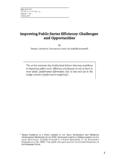Transcription of CHAPTER 4 PUBLIC FINANCE MANAGEMENT SYSTEM IN …
1 95 CHAPTER 4 PUBLIC FINANCE MANAGEMENT SYSTEM IN SOUTH AFRICA INTRODUCTION The PUBLIC FINANCE MANAGEMENT SYSTEM in South Africa has gone through fundamental changes and is still under transition, especially after South Africa s democratization in 1994. These fundamental changes in PUBLIC FINANCE are characterised by the fact that PUBLIC service, in general, in South Africa has evolved as well and is still in the process of transformation. On the basis of the PUBLIC service transformation in general and PUBLIC FINANCE in particular, institutional design and the mindset of PUBLIC servants in general have to respond to the transformation taking place in the Pubic Service.
2 Therefore, managerial leadership should be skilful both conceptually and technically, especially in PUBLIC FINANCE systems and governance in general. It is because a skilful leader should be able to ensure that government objectives, particularly in implementing the PFMA are maintained. Hence, this CHAPTER discusses the theory of PUBLIC FINANCE and provides differential conceptual analysis of budget and budgeting SYSTEM as sometimes used interchangeably, which is an evolution of PUBLIC FINANCE in South Africa, especially with the introduction of Medium Term Expenditure Framework (MTEF). It is because MTEF influences the budgeting SYSTEM , planning and budgeting , including financial planning and MANAGEMENT .
3 This CHAPTER outlines the budgeting SYSTEM in South Africa and the role-players within the budgeting process in order to explain the dynamic nature of the PUBLIC FINANCE MANAGEMENT SYSTEM in South Africa. EVOLUTION OF THE PUBLIC FINANCE MANAGEMENT SYSTEM IN SOUTH AFRICA Research indicates that in the past, the South African budgeting SYSTEM was secretive. There was no open formula for funds allocation for the country. Again, literature reveals that the budget was a matter of the executive, meaning that the executive was at the forefront of compiling the budget, with less role for Parliament. Parliament was simply rubber-stamping 96what the executive has compiled.
4 Due to the secretive nature of the budgeting process, it was difficult to analyse and scrutinise service delivery trends and conduct financial analysis because budget documents were not accessible. As a result, accountability and transparency suffered as elements of good governance. The former Department of state Expenditure and the function Committees determined budget allocations. These committees were responsible for co-ordinating budget proposals and distributed allocations for a given function, like heath or education (Walker & Mengistu, 1999:58). This confirms that the executive was the major role player when it comes to budget process, particularly allocations to spending departments and parliament s role was minimal.
5 Undoubtedly, the budget process or allocation was no two-way process, inclusive and participatory. In essence, the budget process was not inclusive and highly centralised. For example, the function committees were very exclusive in approach and reflected control of funds rather than managing funds for service delivery improvement. As a result in 1995, these committees were disbanded (Walker& Mengistu, 1999:58). The above description of past processes was based on a traditional form of budgeting , namely the line-item budgeting SYSTEM . Again, the Exchequer and Audit Act of 1975 reflected the basis for expenditure control because the Act was not intended to manage PUBLIC finances, but to control them.
6 Additionally, the Act was too prescriptive, meaning that there was no option for flexibility as it was based on rules. As Abedian, Strachan and Ajam (1998:54) explain traditional budgeting focused on expenditure controls and the aim was simply to keep control over money spent on government. For example, with regard to its objective or aim, the Exchequer and Audit Act states that the Act regulates the collection, receipt, control of state property and monies of the state (Exchequer and Audit Act, 1975:2). Given the objective of the Act, it is evident that the Act was input and control-oriented rather than focusing on results and MANAGEMENT . Due to the administrative nature of PUBLIC finances, accounting officers were not active within an organisation because MANAGEMENT culture was not the order of the day, the organisational culture was rule-bound, with less flexibility and delegation.
7 Service delivery was not customer-oriented, as a result value for money suffered. The Exchequer Act operated within a traditional budgeting SYSTEM like line-item budgeting SYSTEM , which was not results-focused, but input- 97oriented. With regard to the item budgeting SYSTEM , an input-focused MANAGEMENT and budgeting are oriented towards how much resources, staff and facilities, are made available for a programme or ministry (Organisation for Economic Co-operation and Development, 2002:8). The OECD s view on the item- budgeting SYSTEM clearly indicates that a traditional approach to budgeting as outlined by the OECD was not focused on results or outcome; the latter is crucial in the modern PUBLIC MANAGEMENT .
8 Since the transition to democracy, the new constitution demands transparency and accountability on matters of governance. In 1998/9, the medium term expenditure framework was introduced in South Africa in order to encourage the participative approach in budgeting process, transparency, accountability and policy- budgeting co-ordination. The introduction of the PFMA also encourages effective financial MANAGEMENT , transparency and accountability. The budget is more decentralised and all spheres of government make decisions about the budget through established forums or structures. Research shows that performance budgeting has been introduced worldwide and some countries such as Australia and New Zealand have introduced it.
9 The introduction of performance budgeting in South African PUBLIC Service is important as it introduces a results-oriented approach and encourages the MANAGEMENT of government resources with flexibility within the legal framework so that managers remain accountable. PUBLIC FINANCE : A THEORETICAL ANALYSIS PUBLIC Administration is multidimensional and multidisciplinary in its approach. It s nature or approach is made up of, among others, governance, MANAGEMENT , leadership, PUBLIC policy, human resources and PUBLIC FINANCE . The latter is crucial because it supports the government s vision in attaining its goals, as it is the cornerstone of service delivery.
10 It is because once the budget is compiled and distributed efficiently to agencies, departments are expected to ensure that strategic planning, financial planning and MANAGEMENT , auditing, debt MANAGEMENT , revenue MANAGEMENT and expenditure MANAGEMENT are central in managing PUBLIC finances. The budget becomes fundamental in financing government programmes and service delivery in general. The functioning of any government depends on proper revenue and expenditure 98management. PUBLIC finances become central through regressive and progressive tax forms and other forms of financing such as borrowing in order to FINANCE government deliverables or the implementation of PUBLIC policies so that the lives of people are improved.
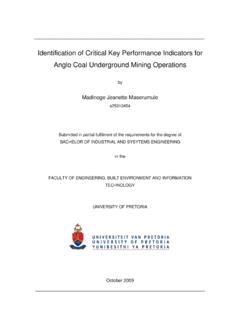
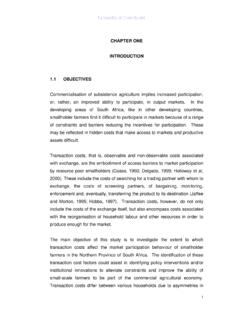
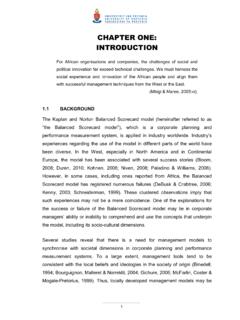
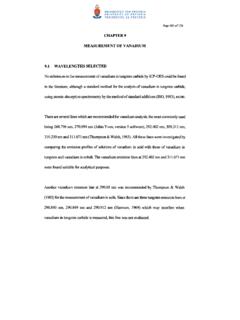
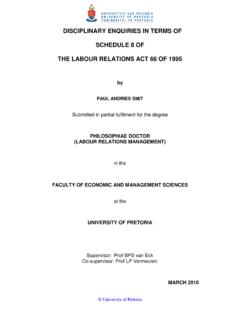
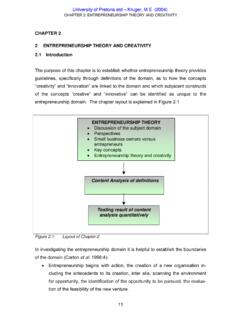

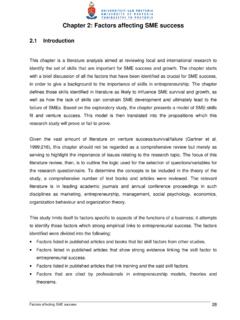
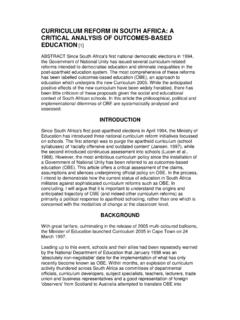
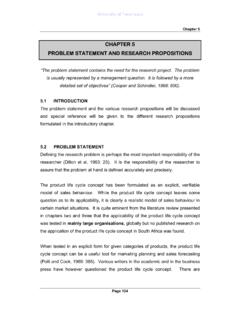
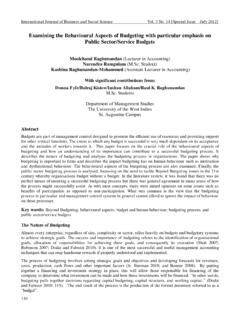


![[FINAL DRAFT] Police Department Budgeting: A Guide for …](/cache/preview/3/2/b/a/d/9/2/7/thumb-32bad92795895e5e1d5b518d2f787073.jpg)
